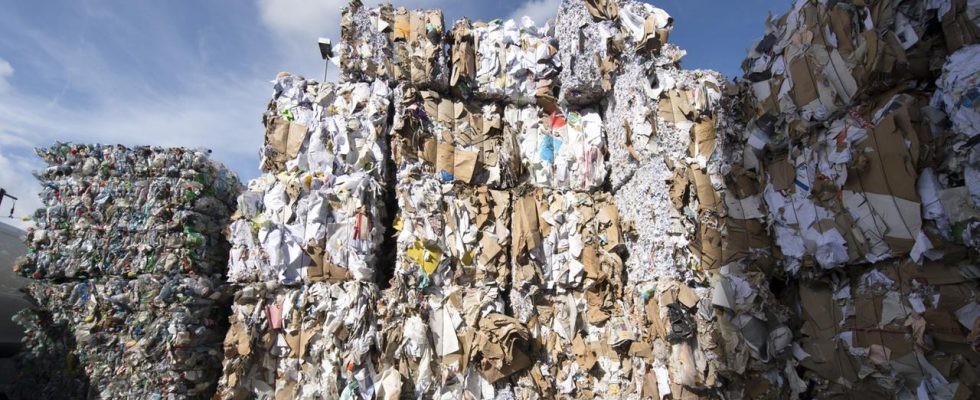Where there used to be plastic bags, paper bags are now the norm. Good for environmental protection due to the possibility of recycling. But a new type of paper is unsuitable for this.
When shopping, customers now get paper almost everywhere where there used to be plastic bags. In Munich alone, more than 77,000 tons of waste paper end up in the city’s blue bins every year. But in the meantime there are also materials that the paper industry cannot recycle at all.
Specifically, it is about so-called wet-strength paper, often used for bakery bags or supermarket carrier bags. For this purpose, substances are added to the paper fibers during production that make the paper more resistant to liquids or moisture.
Which bags are wet-strength – and how to recognize it
The authors of ARD program Plusminus carry out a test: They bring various pieces of paper packaging to the Technical University of Darmstadt to have them examined there. At the Institute for Paper Manufacturing and Mechanical Process Engineering, scientists have been working with paper for more than 100 years.
“You have to test that in the laboratory,” explains Samuel Schabel, a professor at TU Darmstadt. Because the information is not on the product, and even as a “paper specialist” it is not visually recognizable. In order to analyze the paper, it is laboriously cut up and mixed with water for a certain amount of time, as in paper factories. So-called wet-strength and other new types of paper do not dissolve completely.
Why such types of paper are used
“We want to get away from plastic in the packaging sector – for reasons of resource conservation,” explains Schabel. But to make paper-based packaging, for example, you need a certain functionality – such as the product being waterproof or offering an aroma barrier. “And paper can’t do that on its own. Then there’s a coating or impregnation on it, or additives get into the paper,” says Schabel. There are a number of such additive functionalizations, but they then cause problems when it comes to recycling.
The Darmstadt scientists struck gold with the second sample. While the pure paper dissolves in water and can be processed into new paper without any problems, larger white flakes float in the liquid of a bakery bag: wet-strength materials – unsuitable for making paper from.
Wet strength paper is not declared
Particularly irritating for consumers: the bag examined states that it belongs in the waste paper. Often, however, nothing is written on it regarding disposal. It is therefore not possible for consumers to tell whether paper bags are allowed to be disposed of or not.
Thomas Braun from the Federal Association for Secondary Raw Materials and Disposal calls for a clear labeling obligation for wet-strength papers that are difficult to recycle. “We consider labeling of this so-called new packaging to be essential. The end consumer has a great deal in his or her hands when it comes to this topic, because once it reaches him, he must have an aid as to which container this packaging should go in, depending on its recyclability can.”
Federal Environment Ministry refers to EU
Plus minus ask the Federal Environment Ministry. Why isn’t there such a label? There one refers to the European Union. This is to be regulated in future in a Europe-wide packaging regulation. They also want to stipulate that recyclability must be taken into account when developing new bags and packaging.

